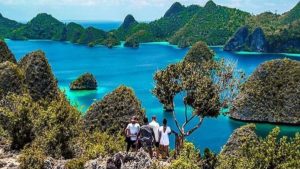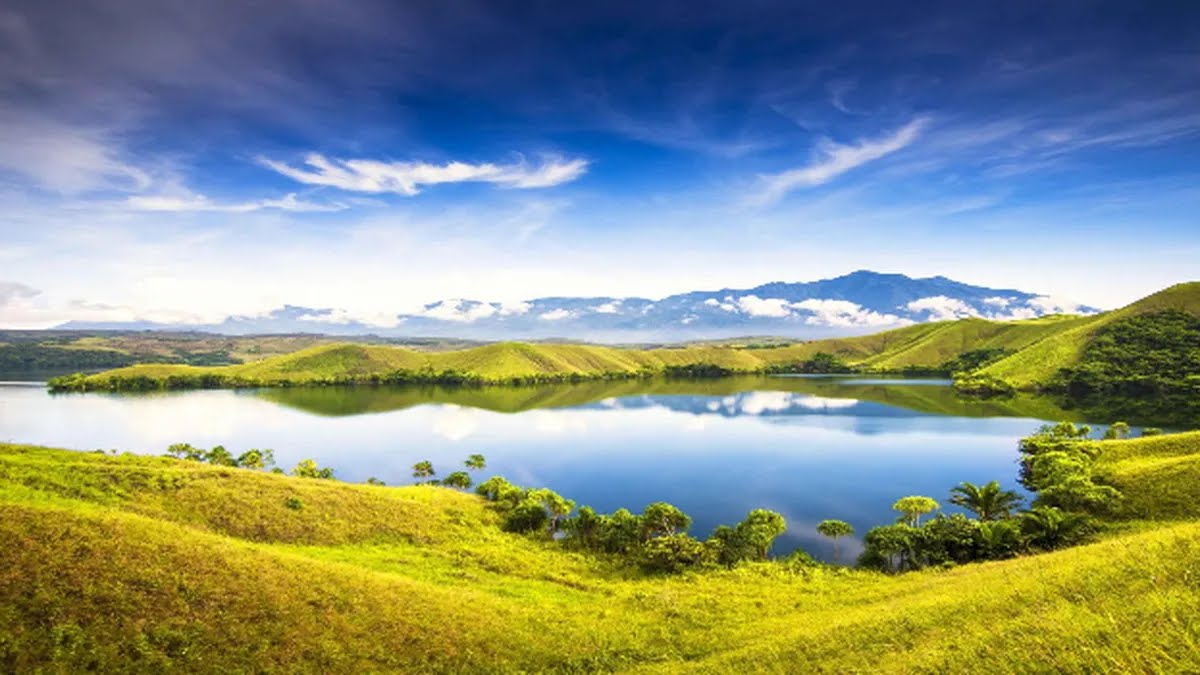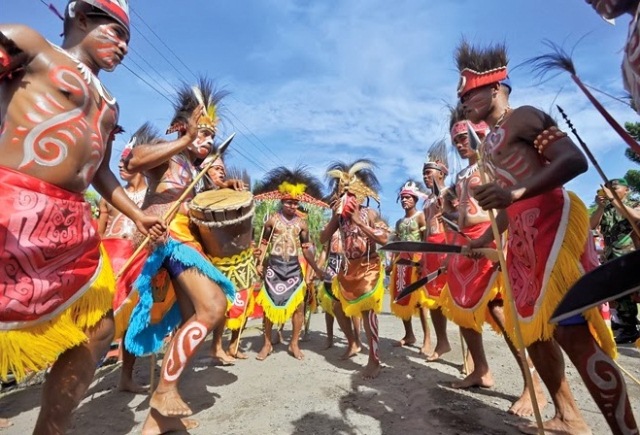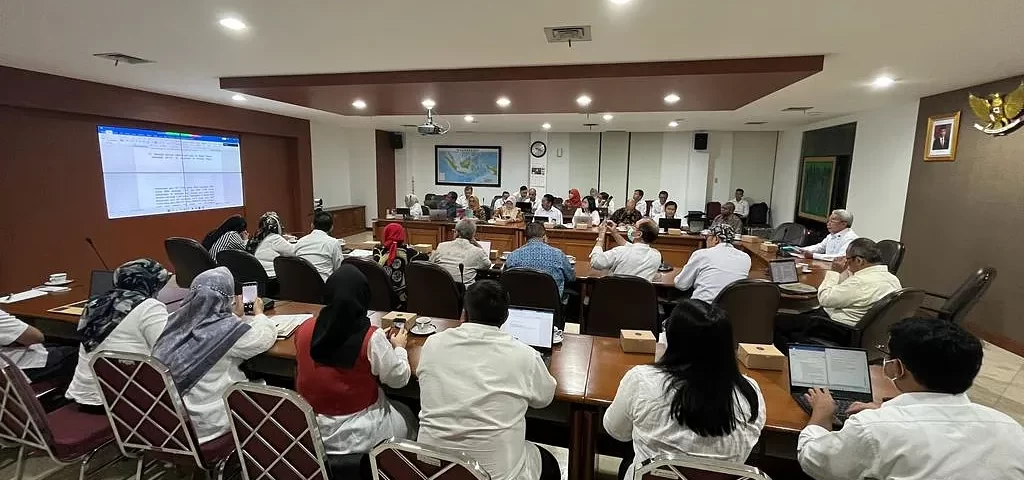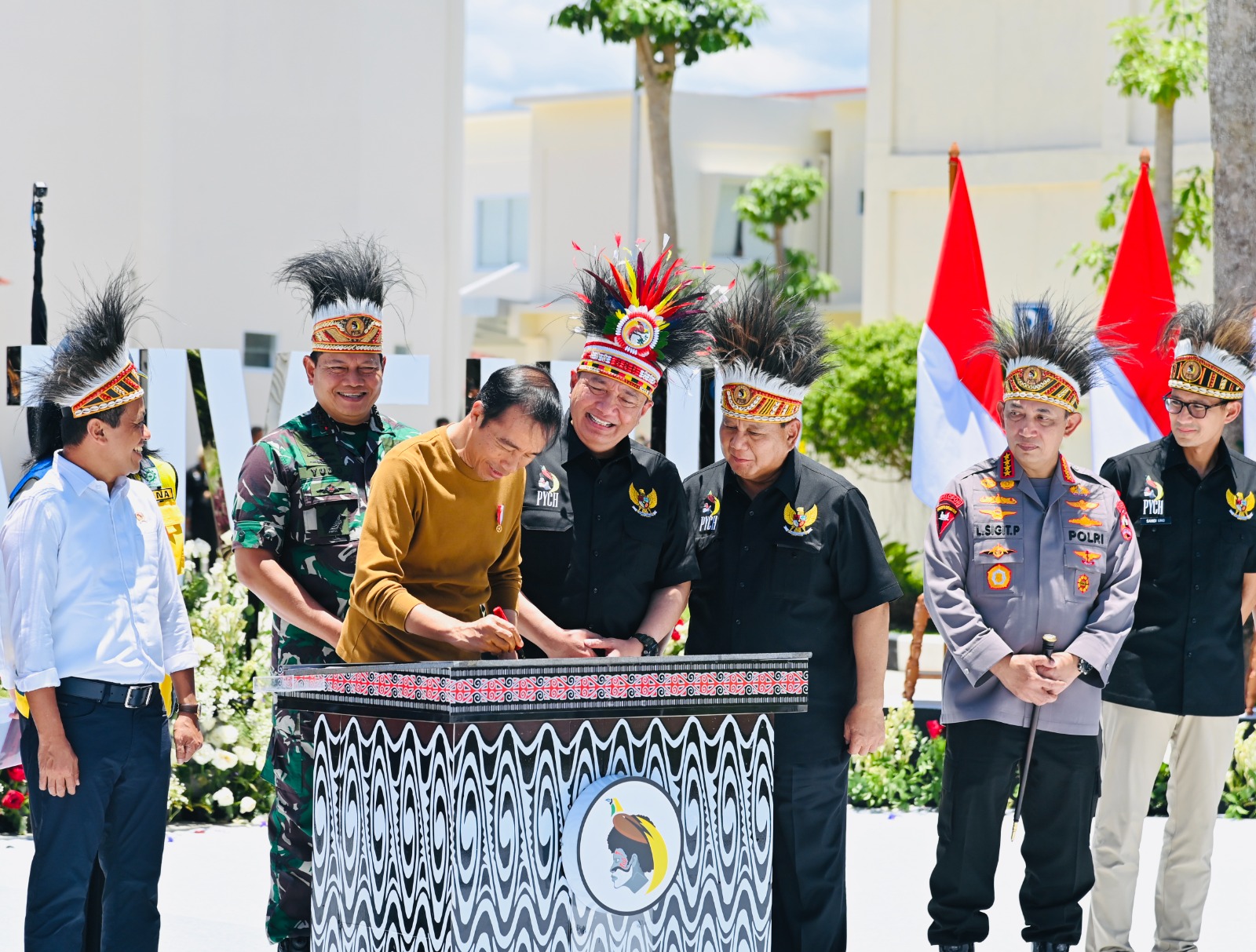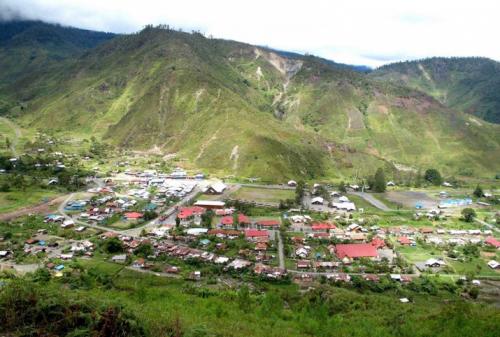WEST PAPUA (PROVINCE):
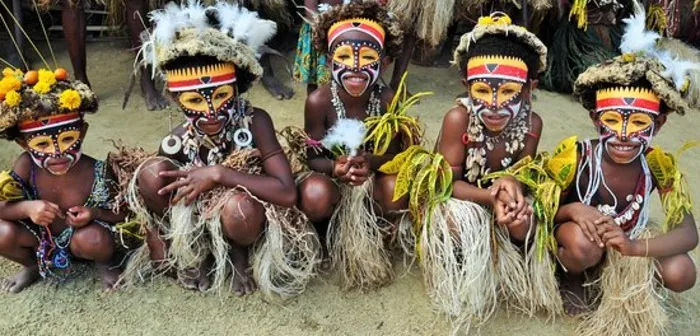
Culture
Like the Papua province to the east, the Papua Barat province is inhabited by different tribes.
Traditional Houses
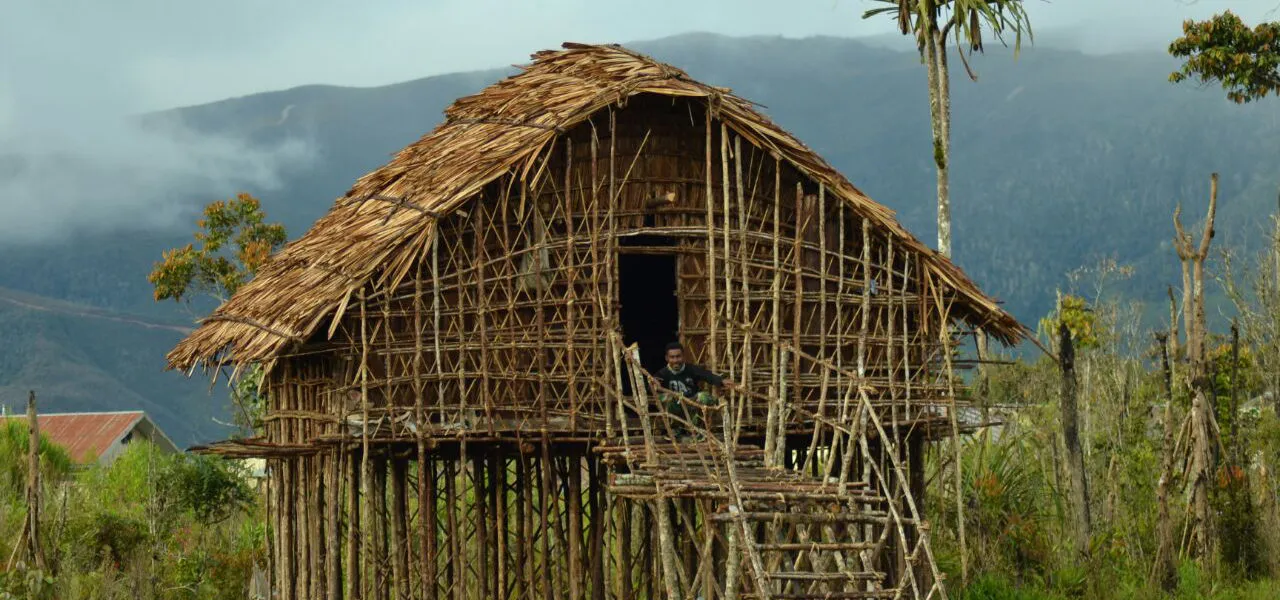
An exhibition house called Rumah Kaki Seribu (Thousand legs House) was recently built to exhibit musical instruments, traditional clothing and handicrafts from the Papua Barat province. The architecture of this building is inspired from that of the region around Manokwari. This traditional house is a stilt house with many pillars. The traditional house whose original roof was made of straw or sago leaves and wood as its pillars. The poles that are made are short and some are high, the pillars are useful for protecting themselves from enemies and the threat of people with evil intentions or black magic.
Clothing
The traditional clothes in the West Papua region are named Serui. Not much different from traditional clothing in Papua, the form of clothing is almost the same for both men and women. They wear clothes and lower body coverings on the chest and head in the form of necklaces, bracelets, ornaments of birds of paradise on the other parts of the head. Equipment worn by men at weddings usually have the groom holding a shield such as an arrow or tombah to fulfill the Papuan custom.
Another West Papua traditional clothing is called Ewer. This garment is purely made from natural ingredients, namely dried straw. With the progress and influence of modernization, these traditional clothes were then equipped with cloth for their superiors. The following is a picture of the traditional Ewer clothing typical of West Papuans. At present, natural materials such as straw or dry fiber are only used as skirts for women. The skirt is made by taking plant fibers and arranging them using a rope at the top. This skirt is made with two layers, the inner layer is knee-length, and the outer layer is shorter. To strengthen skirt ties, belts made of motif is not complicated, namely the gingham with a geometric arrangement.
As for the shirt tops, they use baju kurung made of velvet fabric with knotted tufts on the edges of the arms, neck or waist. This article is derived from outside culture and is usually only used for West Papuans who live around the city of Manokwari. Apart from clothes and skirts, West Papuan traditional clothing for women is also equipped with a variety of accessories such as bracelets, necklaces and headgear. Bracelets and necklaces are usually made from hard grains which are arranged using a piece of yarn while the head cover is made of cassowary feathers.
In the past, men in general only used tassel skirts, the way and materials made were the same as those worn by women. The use of tassel skirts by men is not equipped with a boss so they will only be bare-chested. Today, custom Ewer clothing for men is made of velvet fabric with a more polite model. Knee-length shorts complete with a cloth covering dangling on the front are used as subordinates, while for superiors are used vest shirts made with fabric. Each edge of a piece of men ewer shirt, both for plants, vests and cloth covers is usually decorated with bright colored fabric borders. In addition, there are several other accessories to support their appearance. Necklaces and headgear and war equipment in the form of shields, spears, chopsticks and arrows are some of what usually must be present.
Traditional dance
As West Papuan consists of many tribes, there are many traditional dances from each tribe. The most common type of traditional dance is the war dance. This type of dance symbolizes heroism and valor for Papuans. It is usually danced by men with traditional clothing with bows and arrows as weapons. Historically this dance was performed by soldiers before tribal warfare. As tribal warfare largely been eliminated, but this dance was performed as a show or welcome reception. Usually this dance is performed by seven or more people. The music comes from shells, tifas and drums. The dancing is quite energetics and featured some war movements including archery, jumping and scouting enemies among others.
Yospan dance is another dance originating from West Papua, this dance is an amalgamation of two traditional dances namely Yosim dances originating from the bay of Sairei (Serul, Waropen) and Pancar dances originating from Biak, Numfor and Manokwari. The musical instruments used for Yosim usually used are cuku lele (Ukulele), and guitars which showed foreign influences as these were not instruments from Papua. Included was also local bass made from three strings, with the strings made from Pandan leaves. As well as Kalabasa, a dried Calabash, which was filled beads. In Yosim dance, the women are dressed with weavings to cover the chest and headdress. The dance movements are more energetic though simple. In Pancar dance, the music from Tifah drums which is the universal instruments for coastal Papuans. The drum skin is usually made from soa-soa (lizards). The movements are more stiff following the Tifah beats.
Movements include Seka, this dance movements are usually from southern coast with famous version from Kaimana, Fakfak and Timika. In Pacul Tiga or Pancar Meneru the dancer swing forward three steps and throw both arms and one leg to the left and right which was then repeated fir the other leg. Jef movements are influenced by rock and roll dance from 1969-1971, Gale-Gale movements are from Wondama Bay and Mor-Mambor islands. Pancar movements are performed by the dancers move in a circle. These movements were inspired by animals and have four variations.
Suanggi dance is from the region around Cenderawasih Bay the northern Coast of New Guinea. This dance is basically an exorcism ritual by a bereaved husband after his wife become victim of possession of a woman. The dance is usually only performed when death victims were found which prompts the tribal leaders to initiate the ritual before the tribe members starting the dance.




